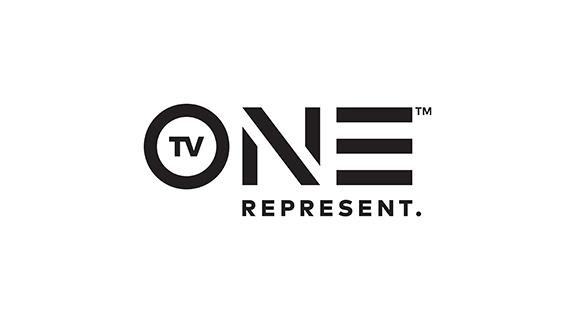There’s nothing new about a cable network rebranding itself, but less than a year after becoming TV One’s new president, Brad Siegel took things a step further.
“He did the most important thing he could do after coming aboard, and that was to gather the leadership—and also some junior members—of the network together for an off-site retreat to really define what our brand should be,” says Lori Hall, TV One’s SVP of marketing.
A one-word concept quickly emerged from the retreat: Represent.
“It’s about our corporate DNA and our brand promise to viewers, as well as our brand promise to our employees,” Hall explains. “It’s something we’ve done from the inside out. While you’ll see it reflected with a new logo, new colors, and a new feel, new vibe, and new voice, it’s really about our core operating procedures moving forward.”
Next, employees were invited to share opinions, questions, and suggestions.
“Having them weigh in on the rebrand before we rolled it out made everyone feel part of it,” Hall says. “It wasn’t something the marketing team did in isolation, or the programming team, or that Brad did all on his own. It was fully collaborative.”
The goal is to represent a broader example of African Americans and African-American culture, but it’s also about re-presenting the brand to the public.
“Represent and re-present go hand-in-hand,” Hall says. “In fact, we’ve used ‘re-‘ words to help further explore what represent means to us as a network. It’s a re-birth, re-imagination, re-fresh, re-focus.”
Instead of a January 1 rollout, executives decided to capitalize on one of the network’s biggest events of the year, The NAACP Image Awards, which made February 5 the hard deadline.
“We moved at warp speed,” says Angelique Mais, TV One’s VP, creative services. “I was at A&E Networks before and helped launch FYI. We had maybe six months for FYI. This we did in three-and-a-half months.”
Mais worked closely with New York-based design agency, eyeball, to meet the tight deadline.
“We set up an accelerated schedule. There was no choice but to hit the 2/5 launch date. It was a great collaboration and we were really pleased with the end results,” Mais says.
“We wanted a look that was fresh and clean, but didn’t go so far off the rails that it felt like a totally different network. We wanted them to feel the stuff they loved was still going to be here, but if younger people want to come and see what we have to offer, we have something for them, too.”
That idea extends to programming as well.
“We always want to make sure we’re encouraging new viewers to come to the network, but we also want to defy expectations in terms of what we create,” says D’Angela Proctor, SVP, original programming and production.
“A good thing about The NAACP Image Awards launching this new look and new brand promise is that we also had a week of premieres. We wanted to make sure the sampling was there so people who don’t automatically come to the network will say, ‘Hey, there’s something here for me,’ whether it’s Born Again Virgin, Here We Go Again, our new reality series The Next:15, or new episodes of Unsung.”
Promoting the relaunch began with a print piece in USA Today’s commemorative Black History Month edition.
“We had a big piece that featured Change Agents, The NAACP Image Awards, and the new series Here We Go Again and The Next: 15 as our big offerings for February, knowing we were wrapping our re-brand and ‘Represent’ around our content offerings,” Hall says. “We went out early with that across print, social, digital.”
On-air promotions were a bit closer to the vest.
“We literally started with a five-second spot the week of. I believe it started [that] Monday. It was literally our old logo morphing into our new logo,” Mais says. “We didn’t roll anything out hardcore until 6 a.m. on Feb. 5.”
At some companies, employees might feel put out when a new president makes brings in a new marketing team to shake things up—Hall and Mais started at TV One in late June, knowing the rebrand would be their initial task—but Proctor says the opposite is true.
“Our president made it really painless and made sure we were all in sync,” Proctor says. “That’s a testament to our leadership. They came in, hit the ground running, and we were pretty cohesive from the very beginning. You can see the difference and growth in how our network looks, visually, and that’s a testament to Angelique and Lori.”
Related Stories:
Tags:













































__twocolumncontent.jpg)











